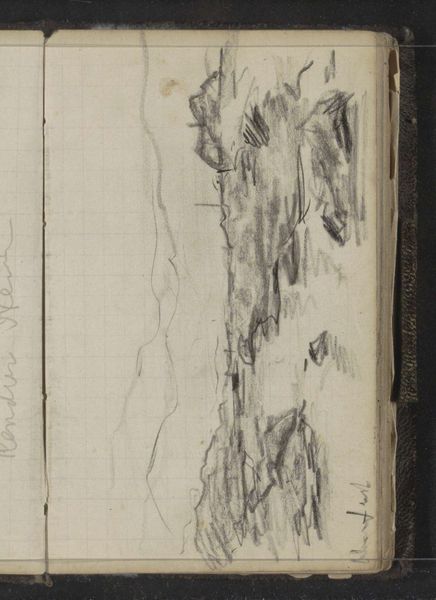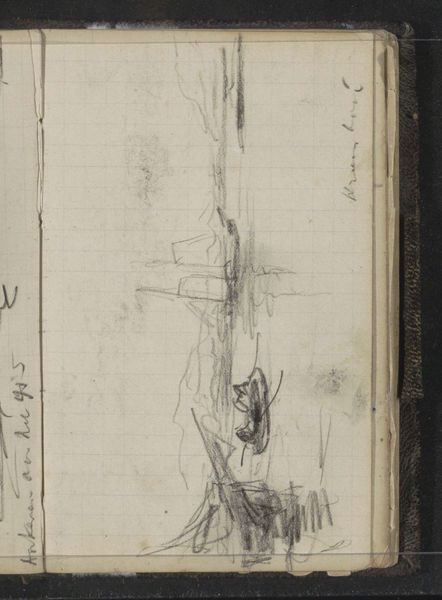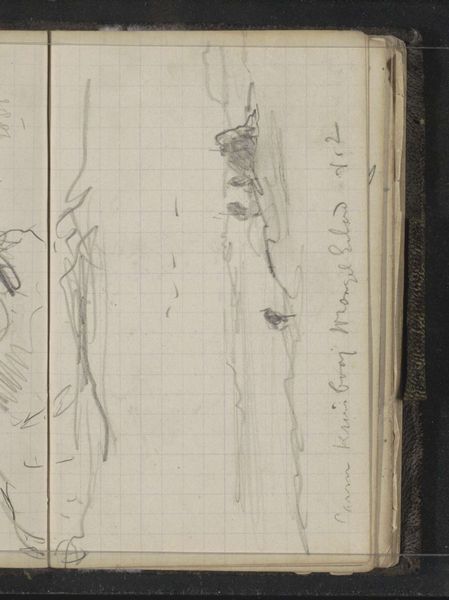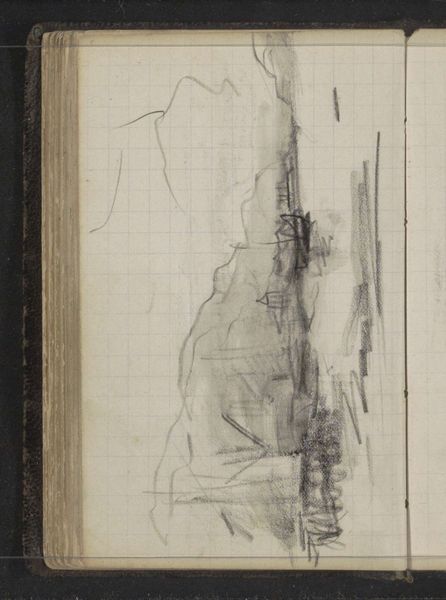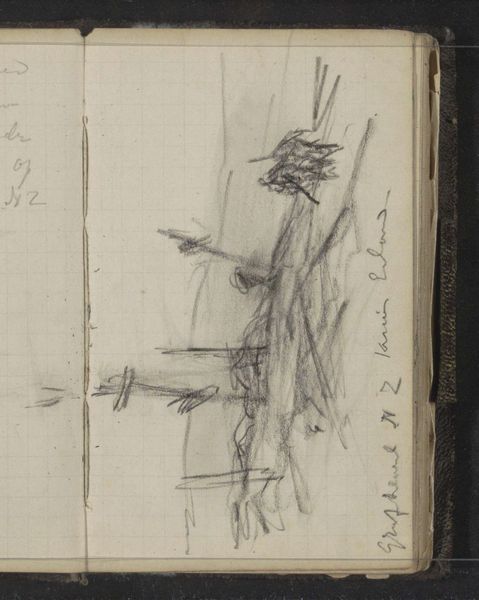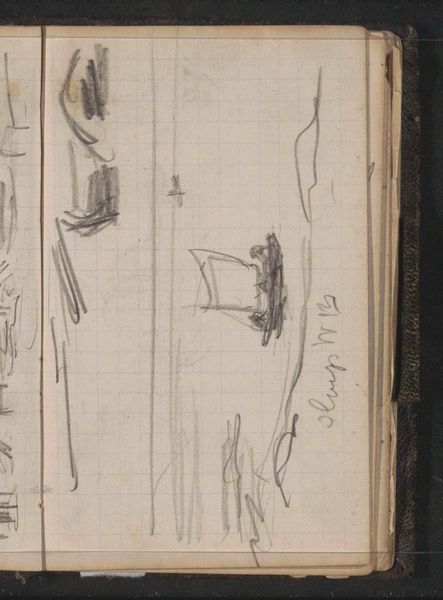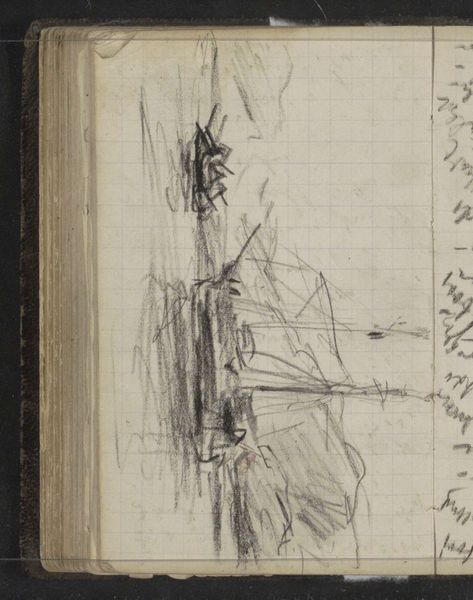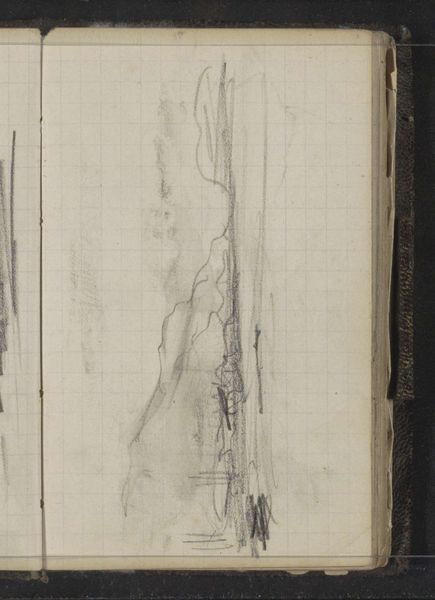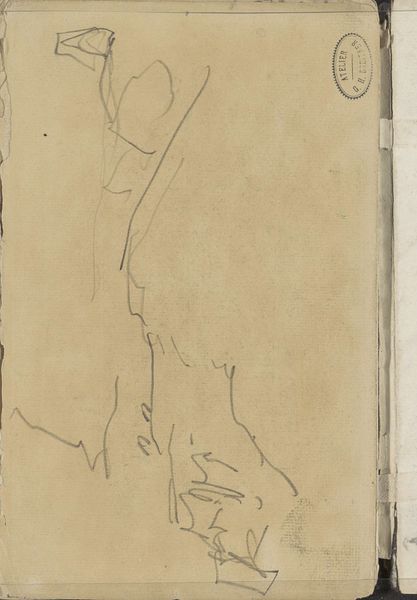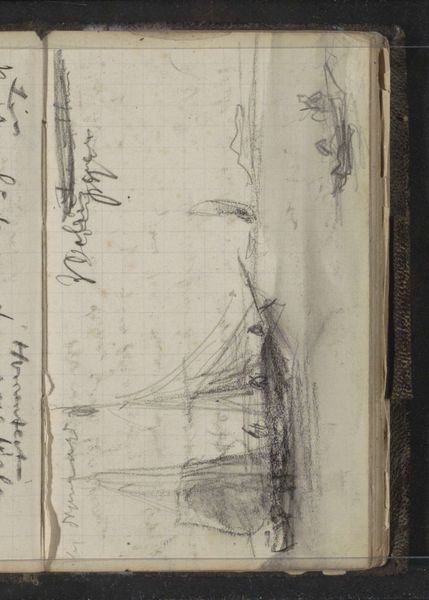
drawing, pencil, graphite
#
drawing
#
landscape
#
pencil
#
graphite
#
realism
Copyright: Rijks Museum: Open Domain
Curator: Before us, we have a drawing titled "Zeilschip op de Barentszzee," or "Sailing Ship on the Barents Sea," created by Louis Apol, likely between 1880 and 1887. It's rendered in graphite and pencil. Editor: It's wonderfully raw, isn't it? Almost like a fleeting thought captured in charcoal and time. You can almost smell the salty, frozen air. It also makes me think of those nineteenth-century sketchbooks they used to carry in their adventurous journey! Curator: Absolutely. The Barents Sea, north of Norway and Russia, was a significant route for exploration and trade at the time. Apol was known for his depictions of winter landscapes and the working lives of people in them, so this sketch is quite typical. The social role of art was shifting then; art aimed at common subjects not historical heroes. Editor: I find the quick, almost nervous lines fascinating. There's something so elemental about the contrast between the dark iceberg form on the upper-left corner and the subtle nuances in the ship drawing... it evokes a powerful tension between man and nature. Or the fragility of any expedition and our ambitions in general, for that matter. Curator: Apol, interestingly, never actually visited the high North. He composed his images based on accounts, photographs, and perhaps sketches from others. Think about what it meant, socially, to imagine these landscapes during a time of increasing awareness around polar exploration. Editor: It’s amazing how he translates the frigid vastness into a small scale. The square grid paper grounds it in a familiar everydayness. A wonderful study on isolation and artistic construction, indeed. Curator: Precisely. And Apol's reliance on secondary sources prompts questions around artistic license and the ethics of representing places unseen. It connects with ongoing debates around who gets to tell which story. Editor: Thanks to your input, I feel as if the cold atmosphere around this quick sketch makes all the more sense now. It leaves one thoughtful, somehow melancholic and intrigued. Curator: Yes, it brings history, environmental conditions, and creative expression together for an emotional engagement.
Comments
No comments
Be the first to comment and join the conversation on the ultimate creative platform.

